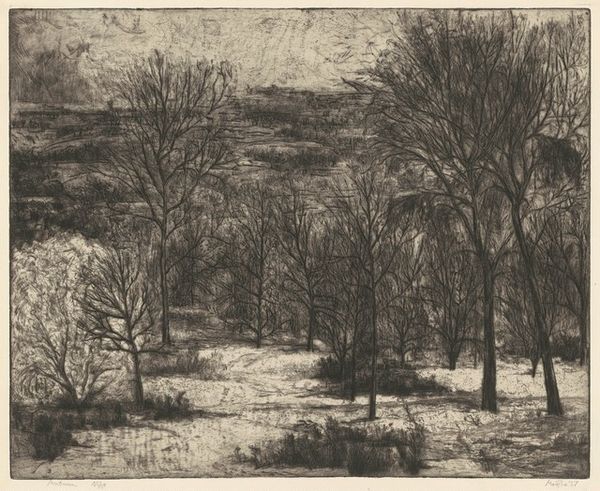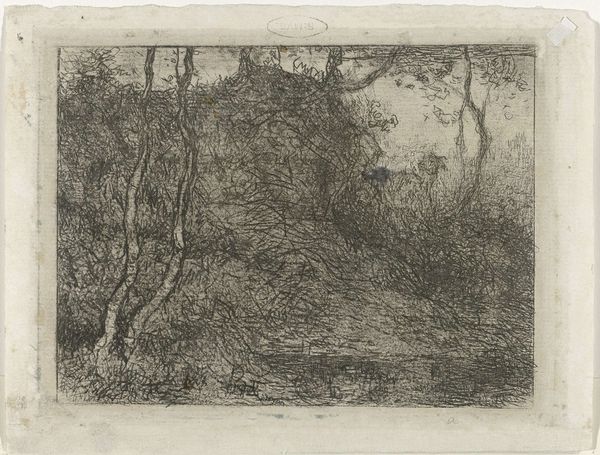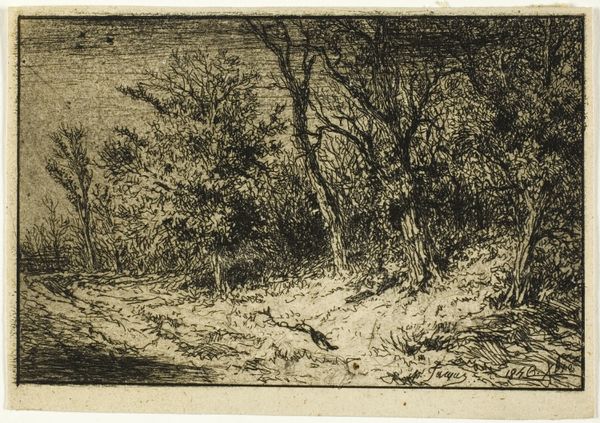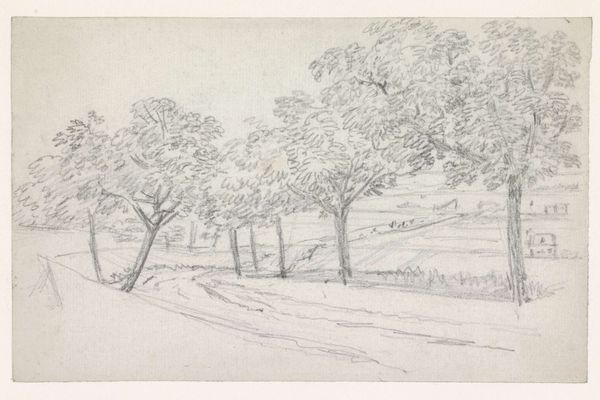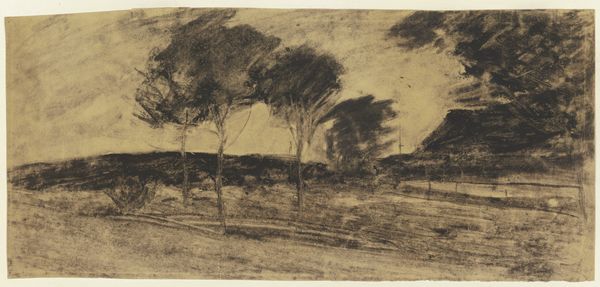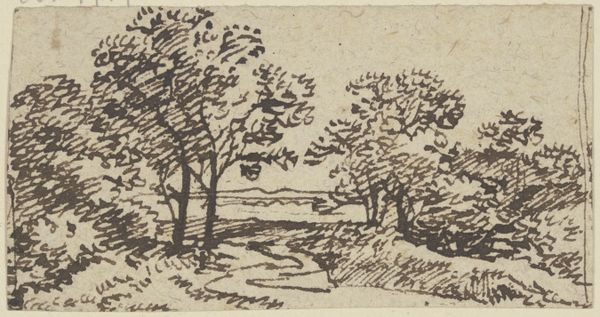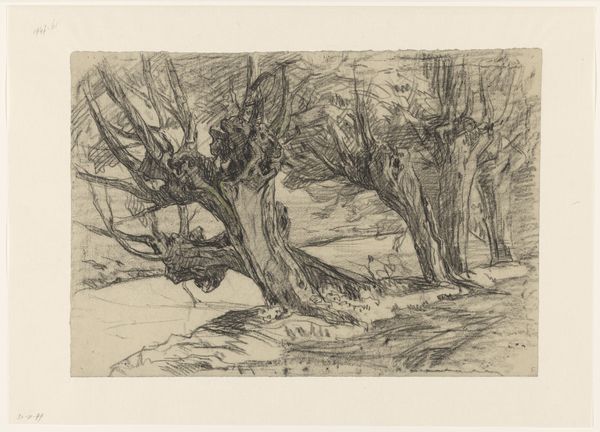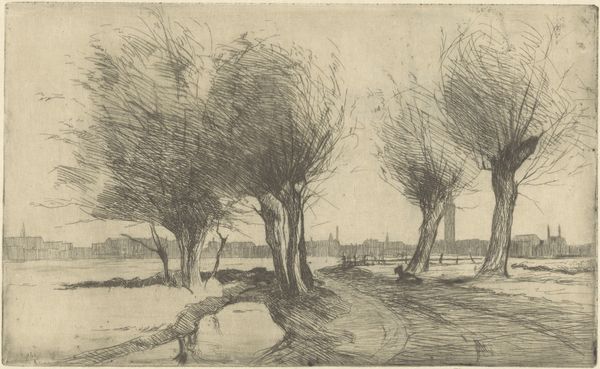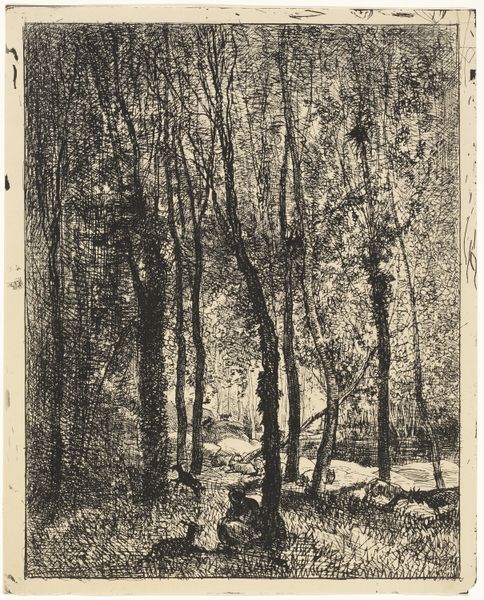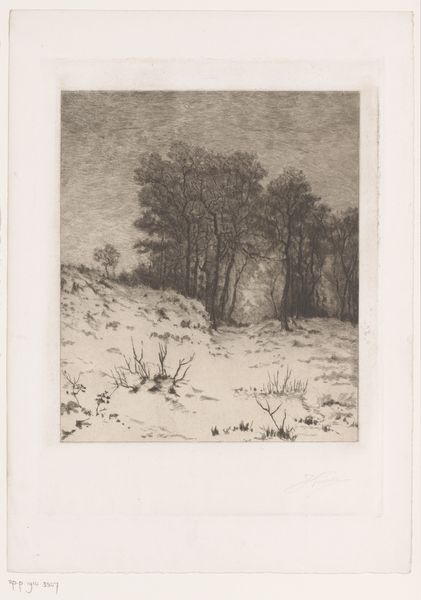
drawing, ink, indian-ink, chalk
#
drawing
#
amateur sketch
#
light pencil work
#
16_19th-century
#
ink painting
#
pencil sketch
#
incomplete sketchy
#
landscape
#
possibly oil pastel
#
ink
#
ink drawing experimentation
#
indian-ink
#
pen-ink sketch
#
chalk
#
watercolour illustration
#
watercolor
Copyright: Public Domain
Curator: What immediately strikes me is the quiet starkness of this winter scene. It feels like a moment suspended in time. Editor: It does, doesn’t it? This is “Obstbäume im Schnee, im Hintergrund Häuser” - that is “Fruit Trees in the Snow, with Houses in the Background”- currently held at the Städel Museum. What's captivating is that while we don't have a precise date for this artwork, we can tell by its appearance that it might originate from sometime in the 19th century. The use of chalk and different kinds of ink offers a textural depth that belies the monochromatic palette. Curator: Absolutely. The stark trees against the muted tones evoke a sense of melancholy, almost like skeletal figures reaching towards a somber sky. The bare branches outlined against the snow create a rather compelling visual metaphor. Trees often are seen to symbolize growth and family, perhaps, but without the leaves the symbolism changes from active living to passive memory. Editor: Indeed. The composition invites us to reflect on themes of winter, memory, and resilience. The placement of the houses in the background speaks volumes about the relationship between humanity and nature. You almost sense a dialogue occurring between human structures and organic arboreal forms. Curator: The contrast between the delicate execution of the trees and the almost smudged background speaks volumes, doesn't it? I see how the artist experiments with both delicate pen-and-ink alongside ink-wash or watercolor techniques to imply atmosphere and spatial depth. In terms of cultural memory, snowscapes like these, across centuries and geography, often evoke a shared human experience of facing harsh environments, while creating a space of reflection. Editor: Exactly! When studying a piece such as this, it's key to understand how accessible art was at the time to lower social classes. Drawings offered a medium more cost-effective and easy for creating sketches compared to paintings, giving art a key socio-political position in a culture of rapidly evolving expression. Curator: This certainly resonates within the symbolic field. Editor: It does prompt you to think about these historical intersections! Thanks for bringing your perspectives to this drawing. Curator: And thank you, it's fascinating to see history echoing through symbolic representation.
Comments
No comments
Be the first to comment and join the conversation on the ultimate creative platform.
